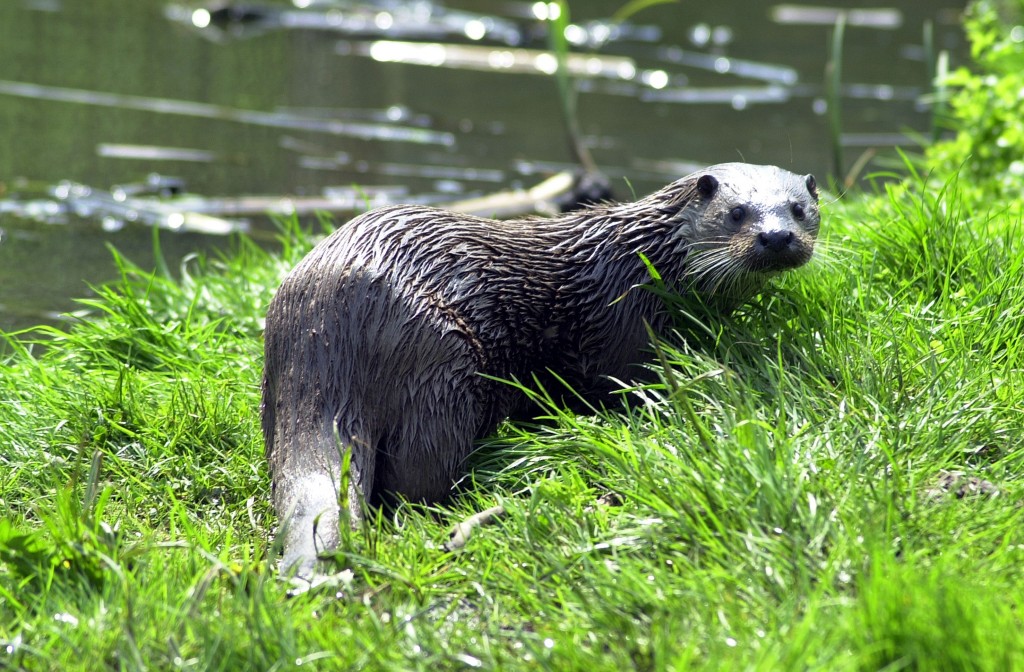Vaja-Lake NCA
The Vaja Lake (in fact, a reservoir) is located in the Northeast-Nyírség, southwest to the village Vaja known from its castle. It was one of the many natural still waters of the Nyírség, most of which dried out in the middle of the last century. After that, a reservoir was established within its original banks. However, the first military mapping indicated only a marsh here, as the floating bogs covering the banks probably misled the cartographer. This lake, similarly to the Mohos-Lake of Kállósemjén, has a polyphyletic origin. Different processes, like river erosion and accumulation as well as sand movements in the Pleistocen and tectonic movements played a role in its development.
Before the uprise of Nyírség during the Würm period, parallel rivers ran through the region in from the north to the south (the ancestors of the Ung, Bodrog and Tapoly rivers), towards the Tisza (to the direction of the present Érmellék - Körösvölgy). With the further rising of Nyírség (actually with its slower descent than that of the surroundings) these valleys became much drier and in parts formed oxbow-lakes with no outlets. Presently, the Berkeszi-main-channel (Main-channel III, an inland water conducting channel) takes up one of these valleys. The reservoir lies at the 30th kilometre of this inland water conducting channel.
The sand movements of the dry, cold glaciation period also played an important role in the formation of the bank. The average height above sea level of the surroundings of the Vaja Lake is around 140 m, the highest points are above 160 m, while the height of the water level in the lake is slightly above 130 m. The lake itself is located in a depression from the Pleistocen period 30-60 m higher than the present river banks, and its sediments are silty sand and sandy silt.
Before World War II, the Vaja Lake in its smaller, natural state belonged to the village of Vaja, and did not extend to the neighbouring villages as the reservoir does nowadays.
The main forms of utilization were hemp retting, reed cutting, and fishing. The extensive reed cutting indicates a former lower water level, however, the possibility of fishing shows that the area had a mosaic pattern with open water surfaces. Since 1962, the water level has been increased by means of a closing sluice, and presently the mean water depth at the end of spring-early summer is more than 2 m, creating an approximately 70 ha surface. The storing capacity of the lake is around one million m3. The lake functions mainly as an inland waters reservoir, but it is used secondarily for irrigation and recreational purposes.
The most important natural values of the lake are the floating bogs that have a good biofiltering capacity and seem to tolerate the organic and inorganic loads quite well. The closing sluice had a favourable effect on the condition of the lake. However, because of the elevated water levels, some of the natural littoral vegetation has disappeared or shifted to higher areas while becoming less diverse, but this process was compensated by the fact that there is less chance for the stranding, rooting and the fast reforestation of the floating bogs that would mean death for this living system (as it already happened at the Mohos bog of Kállósemjén).
The present condition of the lake is characterised by the dominance of open water surfaces, but there is a remarkable number of floating islands of different sizes. The smaller ones are actually sedge- and reed roots and rhizomes covered with other plant species, the larger ones are covered with reed stands and Marsh Fern, while on the largest ones alders and willows set foot. A huge, stranded bog covered with alder forests and willow-poplar groves forms a peninsula in the northeastern part of the reservoir. Contrary to the islands, the soil is only unsteady at the edges of the peninsula, the rest is already stabilised.
In order to take preliminary steps for the protection of the reservoir, Zoltán Borsy, a professor of geography from the University of Debrecen was asked for his expert opinion in 1975. An interesting fact, that at that time the existence of the floating islands was only known to geographers but not to botanists. In Borsy’s opinion, the lake was worthy of protection, despite the amount of built-up areas and other, non-natural uses of the area. He suggested undertaking zoological surveys in the area. It was also around this time, that Dr. Márton Balogh, a hydrobiologist specializing in floating bogs revealed that these islands are unique in their special formation, but they also preserve several peculiar plant species and associations. As a result of their initiative, an 78-hectare area was designated for protection in 1996.
2. Description and nature conservation of the area
Among the natural values of the area, botanical rarities have the highest importance. According to our knowledge, these rare species can only be found in the islands and on the northeastern, forested peninsula (although we only have scant data on it), but not in the littoral zone. The most peculiar values occur in reed beds with Marsh Fern, and in alder and willow groves. One of the most valuable species of the bog is the Crested Buckler-fern, which is regarded as a glacial or early holocen relic in Hungary. Only a few native habitats are known among which the population in Vaja is by far the biggest. It is also worth mentioning that three other fern species live on the islands and two of them are protected. An other botanical singularity is the Kiev Nettle, living mainly in reed beds with Marsh Fern. Since the occurrence of this species corresponds to those ancient watercourses that might have had run here, it is possible that these populations survived here since the glacial period. The Fen Orchid (Liparis loeselii) is a rare, tiny and strictly protected orchid species with small green flowers, known only from 3-4 sites in Hungary. The species only presents itself with few specimens here, on sites free from weeds. Unfortunately, the individual plants grow on the anchored part of the floating bog, which was stranded in 1995-96 because of the low water levels. That is why, after flooding the area, the population submerged. Hopefully, the population, with around 50 specimens in ‘good’ years, will recover by means of water level control compatible with conservation purposes.
According to the hydrobiological surveys started in the ‘90s, the Hydrocorisae fauna proved to be very rich (18 species were found compared to the 27 species known from the Lake Balaton). On the other hand, the Odonata and Gastropoda fauna is rather poor.
Regarding the future of the Vaja Lake, we need to be aware of the fact that the utilization of the reservoir is multiple. It is used for agricultural, as well as for recreational and nature conservation purposes. Hopefully, the multipurpose utilization of the lake will continue to fulfil the needs of all stakeholders in future, enriching both the social and the natural values of the Vaja Lake.
















